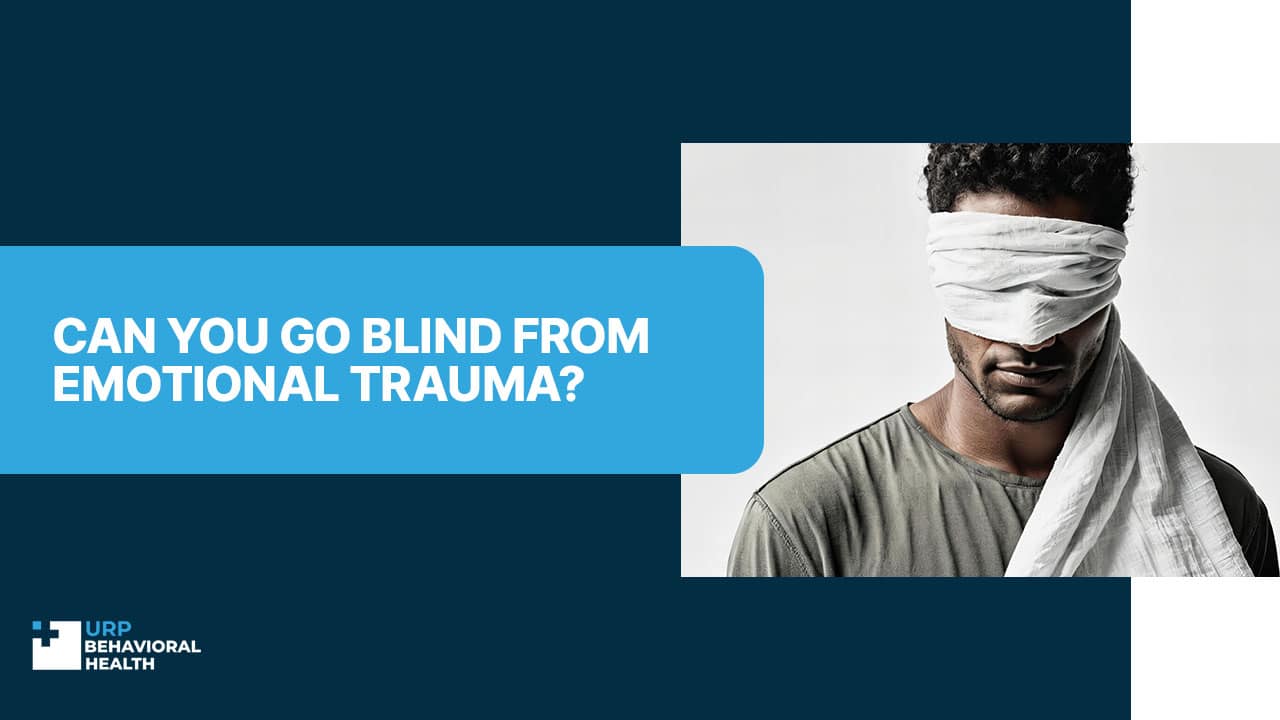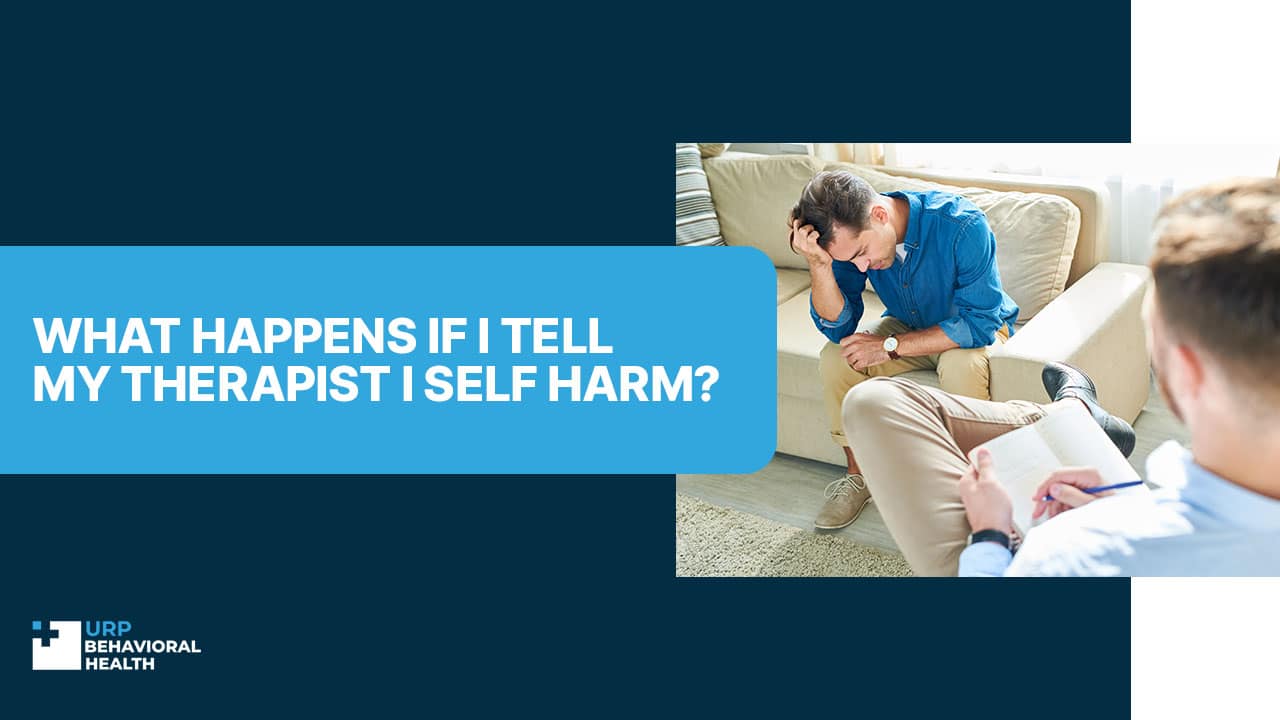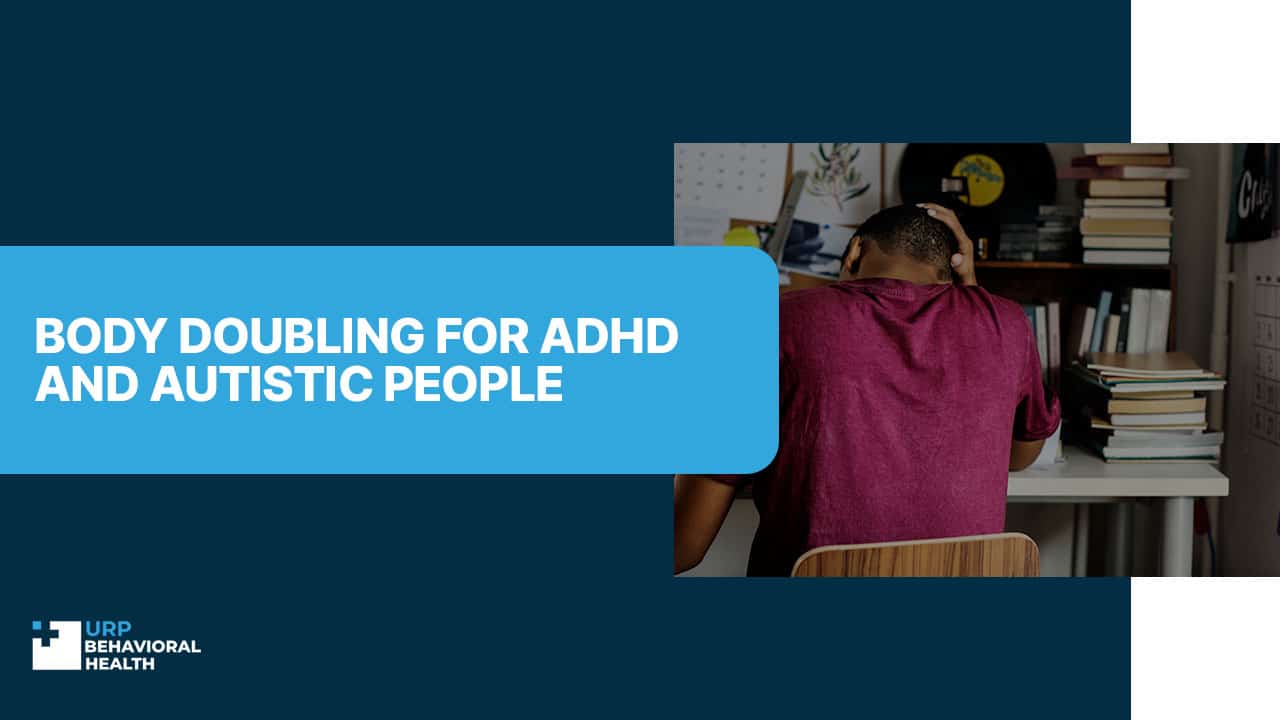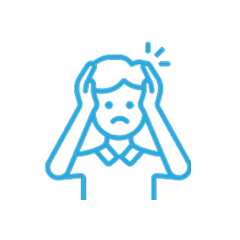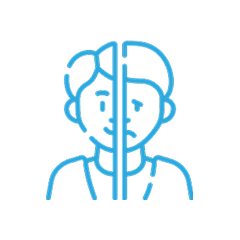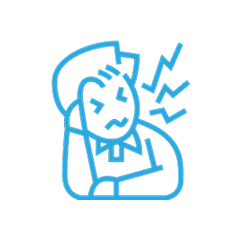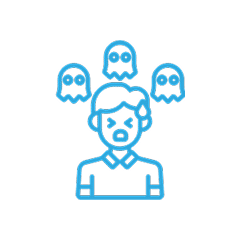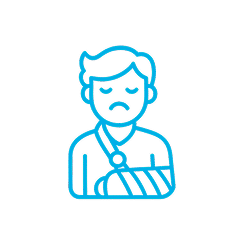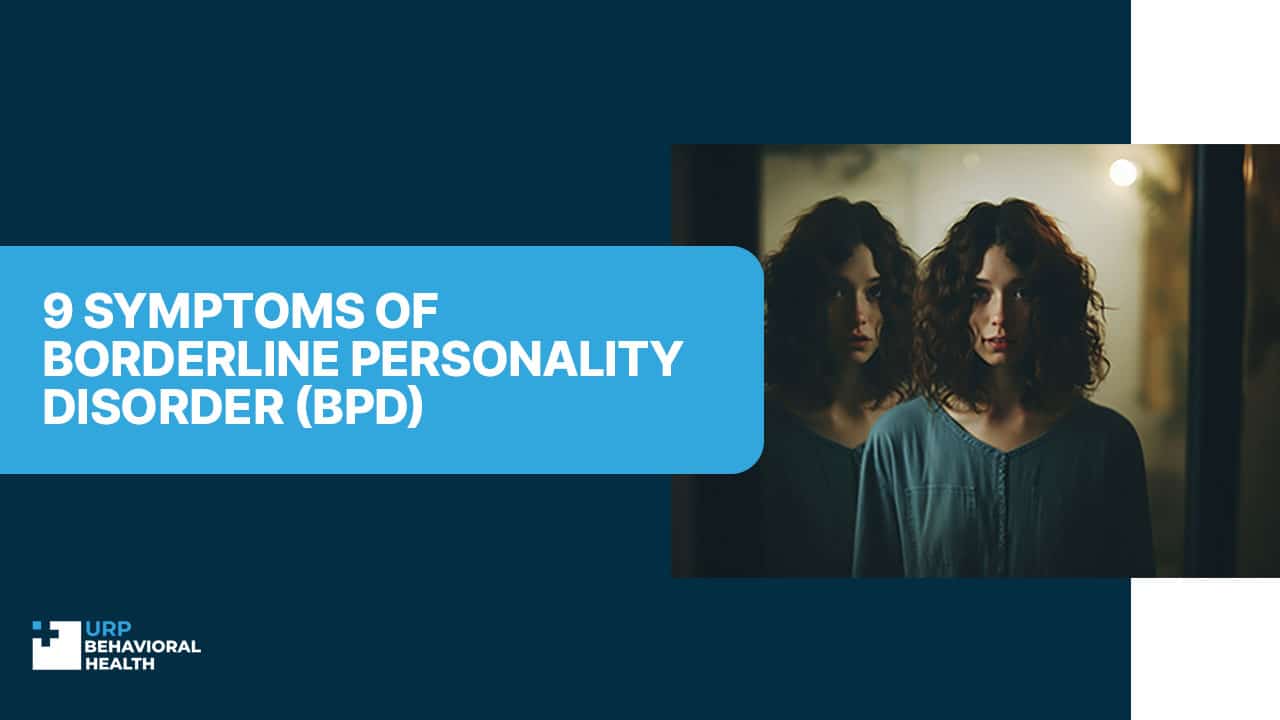
9 Symptoms of Borderline Personality Disorder (BPD)
Do you often feel angry, experience unpredictable mood swings and cannot get rid of the feeling you are totally alone in this world? Of course, from time to time, such feelings can occur in any person, yet, if they become regular and a person cannot cope with them, it is better to consult with a medical specialist to ensure you do not have BPD. This mental health disorder is not extremely rare. As stats say, in the US, the prevalence of Borderline Personality Disorder (that’s how this abbreviation sounds in full) varies from 2.7% to 5.9% [1].
The main definition of this disorder is a pathological mental state based on an identity defect with a tendency toward emotional instability, loss of impulse control, and sharp mood swings. A person with borderline personality disorder has a poor understanding of their feelings, motives, and needs. Such people are unable to build relationships and defend their boundaries, and often they cannot find a use for themselves. It manifests in young adults but sometimes, the first symptoms can occur in adolescence.
Yet, how do you decide on the diagnostics of BPD if you suggest it as your or your loved one’s mental health issue? Before you book an appointment in a mental healthcare center, please, read a bit more about what BPD is and which borderline personality disorder 9 symptoms shout out loudly about the need for medical evaluation and diagnostics for further effective treatment and compensation.
Contact our admissions team now to begin your path toward a brighter future.
The Basics of What Is BPD
The term BPD or borderline personality disorder was suggested by Adolph Stern in 1938 [2] regarding patients who were fully neither of a psychotic type nor of a psychoneurotic. That is, ‘borderline’ symbolizes that persons with diagnosed BPD have an overlap with other psychotic and psychoneurotic mental disorders. Moreover, this disorder is comorbid with such diagnoses as anxiety, depression, and bipolar disorder with a diversity of symptoms characteristic to most of these mental health issues.
The main thing to know about BPD is that it results in overall mental health disruption. The person suffering from borderline personality disorder experiences constant swings from anxiety to calmness and apathy, from full self-confidence to despair, and from happiness to dark depression. The disorder impacts not only the mood sphere. It regulates the whole socialization of a person, the way they communicate with other people and build relationships.
Often the etiology of BPD is rooted in childhood abuse issues, neglect of parents, and early separation from parents/caregivers. Some scientists claim it to be a result of hypercontrol in childhood and bound school bullying issues with it. It was also detected that BPD can occur in persons who grew up in a marginal environment or dysfunctional families. Other reasons include genetic predisposition and breakages in regulatory functions of the brain and neuropeptide system.
In any case, to clarify the picture of this disorder, it is better to know which are the core 9 BPD symptoms. These 9 traits of borderline personality disorder can be divided into 4 distinctive groups according to their application areas, which can overlap [3].
These are as follows:
- Emotional destabilization (officially called by psychologists as affective dysregulation).
- Cognitive and perception distortions.
- Issues of impulsive reactions and unstable behavior patterns.
- Intensive engagement in relationships with other people in an unstable mode.
All 9 characteristics of BPD relate to these areas and they can combine in multiple ways as each personality remains unique, and these symptoms can manifest in various ways with various intensity.
Symptom #1: The Fear of Abandonment
The first in the range of these 9 signs of BPD is a constant fear of abandonment. It refers to the etiology of the disorder with early separation or child abuse traumas. Often, people suffering from BPD feel lonely and abandoned and this results in their striving to build codependent relationships, over control their partners, family, or friends. In some cases, suicide attempts and issues manifest in people with BPD as a coping strategy for ensuring their partners or family care about them.
Symptom #2: Unstable Relationships
Destabilization is the word that describes BPD the best way. This refers to relationships. BPD patients fear rejection and abundance, and this makes them unstable in their relationships. Even being a couple of minutes late for their partners can arouse anger and panic in such people. They tend to change their minds about a significant person dramatically. The proverb “From love to hatred is one step” is 100% about them, as they can idealize their partners or friends in the early stages of relationships, and then they get dramatically disappointed when their expectations fail.
Symptom #3: Unstable Identity
This fluctuating attitude refers to self-perception as well. If you wake up one day feeling that you can turn mountains, and in an hour you feel absolutely useless and a total loser, and this tends to repeat regularly, it’s time to think about mental health examination as distorted self-perception is one of the most evident among 9 characteristics of borderline personality disorder. Unstable self-identity and self-evaluation are typical for BPD, and they impact the overall behavioral patterns of a person.
Symptom #4: Impulsive Behavior
These distortions in identity and relationships cause the behavior of people with BPD. They act unpredictably, and they change their minds instantly. Often, these behavior patterns result in drug or alcohol misuse, binge-eating, gambling or sexual addictions, etc. That’s why patients with BPD have often additional diagnoses like anorexia, bulimia, alcohol, drug, or medicinal addictions.
We’ll help you understand your options and guide you toward care.
Symptom #5: Self-Harm
Another behavioral pattern characteristic of BPD is self-harm impulses. The reason is to torture themselves as when the feeling of abundance manifests in BPD-diagnosed people, they feel they are bad, and they want to punish themselves. Frequently, this symptom varies from its lighter version like self-cutting with razors or cigarette burning to harder issues of suicidal attempts.
Symptom #6: Extreme Mood Swings
Even in terms of a minute, a BPD-diagnosed person can experience severe mood swings from rage to joy and from anger or anxiety to terror. These emotional swings are also among the most manifesting 9 criteria for BPD. It impacts the whole activity and interactions with other people as BPD persons can change their attitudes, opinions, and behavior dramatically with no evident reasons.
Symptom #7: Chronic Emptiness
BPD makes a person feel empty and unsatisfied with all areas of life. Physical dysphoria and anhedonia are commonly detected in such patients. This results in an endless race for more emotions, impressions, and more extremes. Yet this race brings no pleasure either from the process or from results. Life goes in a vicious circle with feelings of uselessness and neglect growing constantly. That’s why suicidal issues in BPD-diagnosed persons are very high.
Symptom #8: Extreme Anger
Issues of uncontrolled aggression and extreme anger are also common. Such people cannot control themselves and after the outburst targeted the most vulnerable people from their inner circle they often feel guilty and this again reinforces their feeling they are bad. Lack of self-control is one of the most distinctive symptoms of this disorder in general, and particularly, extreme anger is what regularly spoils the overall life quality of people suffering from it as it leads to the destruction of social connections, and the inability to build a career.
Symptom #9: Paranoia and Psychosis
Earlier, borderline personality disorder often was mistaken for schizophrenic issues because of the possibility of paranoid episodes, hallucinations, and delusions, and some issues of maniac ideas of reference. Typically, they are triggered by severe stresses and they don’t relapse over time.
Let’s Summarize
Although the list of 9 BPD symptoms seems threatening, they often don’t ruin the patient’s life totally. Some people develop their coping strategies to manage their lives while some may need additional help and support from psychologists. Each case is normal. Today, BPD can be detected in early manifestation stages in young adults after 18. The decisive criteria for thorough diagnostics of borderline personality disorder are if you have over 5 of 9 signs of BPD repeating regularly. Fortunately, BPD symptoms ease in adulthood: by age 50, 90% of patients have progressed from severe levels of borderline personality disorder to moderate and mild forms. Besides, a healthy lifestyle helps cope with BPD while poor health can be one of the most impactful triggers.
The treatment strategy for BPD is similar to all personality disorders, and it is aimed at diminishing existing symptoms and treating coexisting disorders to improve the life quality of patients and help them integrate successfully into society. This treatment includes regular psychotherapy (the main methods include cognitive-behavioral therapy, mentalization-based therapy, TFP methods, art therapy practices, and schema-focused therapy). In severe cases of symptom manifestation, medications can be used for the patient’s stabilization. These are typically SSRIs, mood stabilizers, antidepressants, and antipsychotics.
In any case, diagnostics and evaluation of 9 characteristics of borderline personality disorder is the first step in this way. You can rely on URP Behavioral Health’s expertise if you have any suspicion you have BPD. Our specialists provide a careful and caring attitude combined with the highest qualification for precise BPD diagnostics using multi-factor evaluation. URP Behavioral Health provides comprehensive treatment plans for BPD in men and women which include methods approved by medical society and refer to evidence-based medicine. Its specialists carefully lead each patient to their recovery and help to return to full-fledged life with no anger, no fears, and no mental impairments.
Get your chance to live a healthy social life and enjoy it in full with the help of licensed specialists from URP Behavioral Health.
Reach out today and let us create a treatment plan designed around your needs.
Resources:
- https://www.msdmanuals.com/professional/psychiatric-disorders/personality-disorders/borderline-personality-disorder-bpd
- https://www.ncbi.nlm.nih.gov/books/NBK55415/
- https://www.nhs.uk/mental-health/conditions/borderline-personality-disorder/symptoms/

